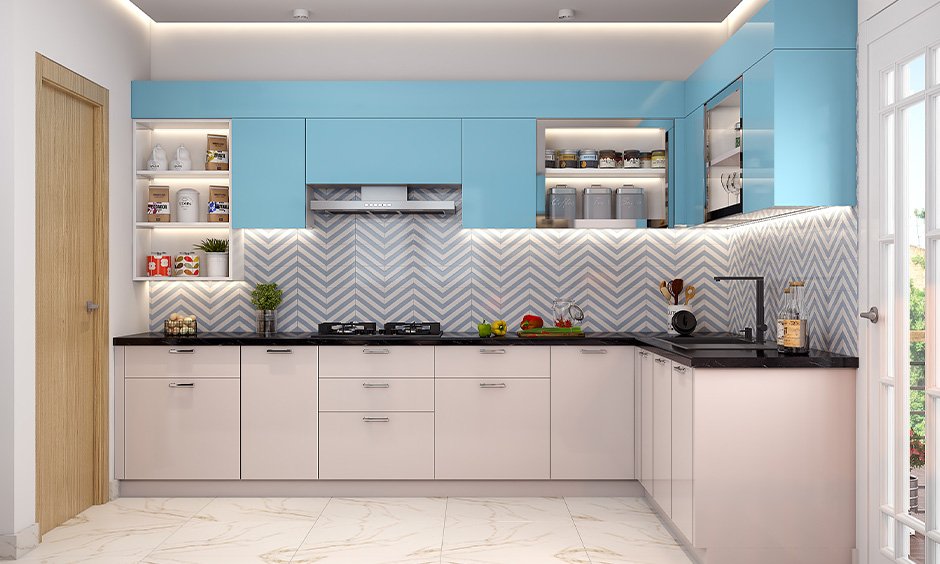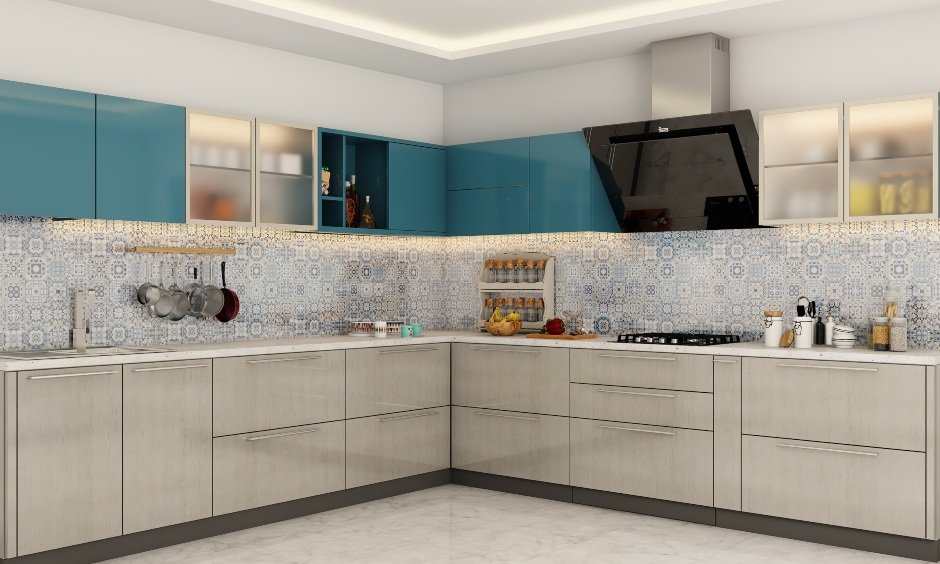Bid goodbye to stressful cooking experiences with an ergonomic kitchen
We’ve all heard of ergonomic chairs. But what is an ergonomic kitchen?
Just like an ergonomic chair provides support while working and prevents discomfort, an ergonomic kitchen design makes cooking a safe and comfortable experience. It creates a workspace that reduces the risk of injury and maximises the ease and efficiency of food preparation.
Kitchen ergonomics takes into account the physical capabilities and limitations of the user. This helps reduce exhaustion due to cooking and makes the entire process quick and stress-free. To create an ergonomically designed kitchen, the kitchen must be divided into the following 5 zones:
1. Food Prep Zone
This is the zone where most of the food preparation takes place. It includes the countertop space, sink, and cutting board. It should be located close to the refrigerator and pantry for easy access to cooking ingredients.
2. Cooking Zone
This zone includes the hob unit and the chimney unit. The cooking area should be close to the food prep zone to transfer the ingredients for cooking quickly.
3. Cleaning Zone
This zone houses the sink, countertop space for washed utensils and trash can. It becomes easy to clean the kitchen after cooking when this area is close to the cooking and prep zones.
4. Food Storage Zone
This zone has all the cabinets and drawers for storing consumable food items. It should be close to the food prep zone in an ergonomic kitchen.
5. Utensil Storage Area
Lastly, the utensil storage area is where you stow the dishes, cutlery, and glasses. It also includes an appliance garage to keep all electronic items in one place.
Now that you’ve been introduced to the 5 kitchen zones, it’s time to look into the specifics of ergonomic kitchen design. Knowing how to optimise these 5 zones ensures the user does not experience discomfort during meal prep and cooking. Listed below are the top ways to make your kitchen ergonomically sound.
8 Ways To Create An Ergonomic Modular Kitchen Design
- Set Up A Kitchen Work Triangle
Your layout plays a huge role in creating the perfect ergonomics for the kitchen. In addition to maximising space, the format should incorporate the classic kitchen work triangle. This means the hob unit, the sink unit, and the refrigerator should be arranged in a triangle shape. This makes it easy to move between these three main areas when preparing meals, making cooking quick and less tiring.

Premium Modular Kitchen Designs
- Install Modular Kitchen Cabinets
Modular kitchen cabinets are not just aesthetically pleasing but also very easy to organise and maintain. Modular units like cabinets with frosted glass shutters, lift-up shutter units, bi-fold split shutter units, and open shelves in the overhead section make it easy to view, display and access kitchen items. Pull-out units and tandem drawers in the base section reduce the need to bend or stretch to reach items at the back of the cabinet.

- Implement Kitchen Design Ergonomics For Corner Units
Accessing the corner spaces in a U-shaped and L-shaped kitchen can be physically painful. Most people stuff these corners with infrequently used items which wastes this space. In an ergonomically designed kitchen, you can enhance the utility of these dead corners by installing kitchen corner units. Choose from a D-carousel unit, S-carousel unit, and magic corner unit to find a perfect match that helps utilise every available space.

Read more about Types Of Modular Kitchen Units
- Place Frequently Needed Items Nearby
Make sure everyday use cooking items are at an accessible distance. Utilise the dado wall for keeping such items handy. For instance, a wall-mount spice storage unit is a smart addition to the dado wall as per kitchen design ergonomics. Similarly, hooks for hanging spoons and ladles ensure cooking cutleries are nearby the cooking zone.

- Keep User Height In Mind
Designing an ergonomic kitchen involves creating a comfortable and efficient workspace for the user. So the kitchen countertop and cabinets’ height must be appropriate for the user. As per kitchen cabinet ergonomics, the cabinets should be at least 24 inches above the countertop to avoid head injuries. Simultaneously, the standard height for an Indian kitchen countertop is 32 inches. An ergonomic kitchen counter height and cabinet height reduce strain on the back and neck while working in the kitchen.

- Rethink The Depth
The depth of a kitchen sink can impact the user’s posture. According to kitchen sink depth ergonomics, the optimal depth for a kitchen sink is around 8-10 inches. This depth allows the user to stand comfortably while washing vegetables, dishes, pans, or preparing food. A sink that is too deep can strain the back and arms, and a sink that is too shallow can prove to be ineffective due to a lack of enough washing space.

- Invest In Good Lighting For An Ergonomic Kitchen
Without good lights, cooking can become strenuous and lead to food being undercooked or overcooked. Combining natural and artificial lighting can help create a bright and inviting space. Install backlights on overhead cabinets to illuminate the kitchen countertop for meal preps. Place task lighting strategically for specific work areas, such as the hob unit, kitchen island, and sink unit.

Read more about Kitchen Lighting Ideas
- Choose Ergonomic Seating
If your kitchen includes a breakfast counter or an attached dining area, invest in ergonomic kitchen chairs or stools that provide proper support. The seating height should be appropriate for the table or counter it is next to. Getting an ergonomic kitchen chair makes tasks like cutting vegetables or having a meal relaxing and enjoyable when you sit on it.

FAQs On Ergonomic Kitchen Design:
What is ergonomics in the kitchen?
Ergonomics in the kitchen is a study of designing cooking spaces that make cooking more comfortable, efficient, and safe. This leads to a more enjoyable and stress-free cooking experience.
How do you describe ergonomic designs for a safe and functional kitchen?
An ergonomic design for a safe and functional kitchen considers the needs and abilities of the people using it. This includes the kitchen countertop height, the lights used in various kitchen zones, and the storage options. It also accounts for the work triangle in the kitchen for an efficient workflow.
What are the advantages of applying ergonomics to kitchen design?
The biggest advantage of applying ergonomics to kitchen design is that it improves comfort while cooking. This elevates the experience of food preparation and cooking. Moreover, it offers higher efficiency, improved safety, and easy accessibility.
Overall, an ergonomic kitchen design can greatly improve the usability of a kitchen. It also makes the kitchen space more enjoyable and convenient for cooking, cleaning, and other tasks. These tips and tricks will help you create an ergonomically designed kitchen for your home. For expert help, reach out to our talented designers or visit your nearest DesignCafe Experience Center today!



















